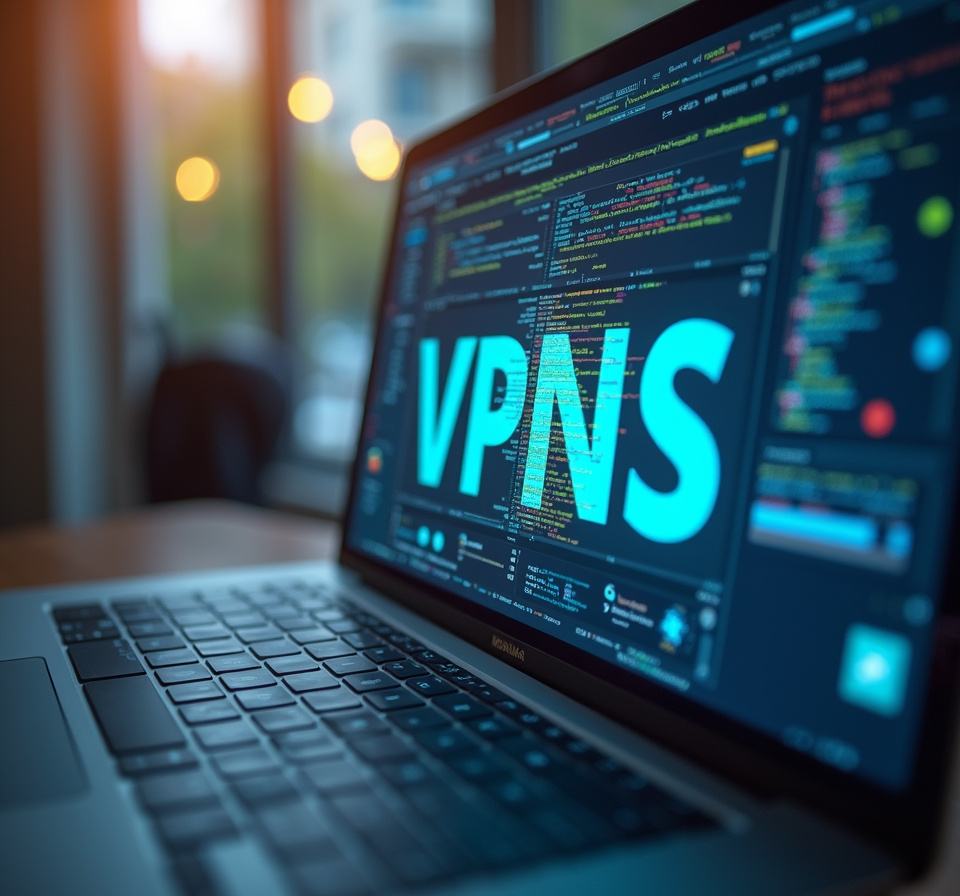VPNs for Digital Publishing: Protecting Content Rights

Table of Contents
VPNs for Digital Publishing: Protecting Content Rights in the Digital Age
In the ever-evolving digital landscape, the publishing industry faces a dual challenge: embracing the unprecedented reach and accessibility afforded by online platforms while simultaneously combating the pervasive threat of content piracy and intellectual property theft. The very nature of digital content – easily copied, distributed, and consumed across geographical boundaries – makes it particularly vulnerable to unauthorized use. Protecting content rights in this environment requires a multi-faceted strategy, and increasingly, Virtual Private Networks (VPNs) are emerging as a critical component of that strategy, offering a robust layer of digital protection for publishers, authors, and their valuable intellectual property.
A publishing VPN serves as a secure and encrypted gateway, effectively shielding sensitive data and proprietary content from unauthorized access and exploitation. It establishes a secure connection between the publisher's network and the internet, encrypting all data transmitted through this tunnel. This encryption process renders the data unreadable to interceptors, preventing eavesdropping and data theft by malicious actors.
The core function of a VPN, in this context, is to mitigate the risks associated with intellectual property infringement, copyright violations, and the unauthorized distribution of protected content. By masking the publisher's IP address and geographic location, a publishing VPN introduces a significant layer of anonymity, making it considerably more difficult for cybercriminals to identify and target the publisher's systems. This anonymity is particularly crucial when dealing with sensitive pre-release materials, confidential author communications, or proprietary publishing workflows.
Furthermore, the encryption provided by a VPN extends beyond simply concealing the publisher's location. It encrypts all internet traffic, including emails, file transfers, and web browsing activity, preventing unauthorized access to sensitive data even if a hacker manages to intercept the traffic. This comprehensive protection safeguards not only the published content itself but also the internal communications and business processes that are integral to the publishing operation.
Beyond protecting against external threats, a publishing VPN also plays a vital role in securing internal operations. Publishing houses often employ a diverse range of individuals, including remote workers, freelance editors, and international collaborators. A VPN ensures that all these individuals can securely access the publisher's network and collaborate on projects without compromising sensitive data.
This is particularly important in today's increasingly distributed workforce, where employees may be working from various locations and using a variety of devices. A publishing VPN creates a secure and consistent environment for all users, regardless of their location or the device they are using. The growing sophistication of cyber threats further emphasizes the necessity of VPNs in the publishing world.
Modern cybercriminals deploy advanced techniques, such as phishing scams, malware attacks, and ransomware, specifically designed to target vulnerable publishing systems. A well-configured VPN, integrated within a broader security framework, can effectively defend against these attacks by minimizing the attack surface and providing a strong line of defense against unauthorized access attempts. Recognizing the increasing importance of digital protection, many publishers are integrating VPNs as a central element of their overall content rights strategy.
This proactive approach not only protects their own intellectual property, it also reinforces their commitment to protecting the interests of their authors and contributors, fostering trust and stronger working relationships. In short, the implementation of a robust publishing VPN is no longer a luxury, but a fundamental requirement for safeguarding content rights and ensuring the long-term viability of publishing operations in the digital age.
remote access VPNs
The selection and implementation of a VPN solution for digital publishing should be approached strategically, considering the diverse range of options and their suitability for specific needs. VPNs are not a one-size-fits-all solution; a publishing house must carefully evaluate its unique security requirements, technical infrastructure, and budget constraints to choose the most effective option. One crucial aspect of this decision-making process is understanding the different types of VPNs available.
Broadly, VPNs can be categorized into and , each serving distinct purposes in a publishing context. Remote access VPNs are designed to provide secure access to a private network for individual users connecting from remote locations. In the publishing industry, this is particularly relevant for authors, editors, freelance contributors, and remote employees who need to access the publisher's internal network to collaborate on projects, access sensitive documents, or manage content.
A remote access VPN creates an encrypted tunnel between the user's device and the publisher's network, safeguarding all data transmitted during the session. This prevents eavesdropping, data interception, and unauthorized access to sensitive information, ensuring that remote workers can operate securely regardless of their location. Site-to-site VPNs, on the other hand, are used to connect entire networks across geographically dispersed locations.
This type of VPN is ideal for publishing houses with multiple offices, production facilities, or distribution centers. A site-to-site VPN creates a secure and persistent connection between these networks, allowing employees to seamlessly share files, access resources, and collaborate on projects as if they were all located in the same physical office. This is particularly beneficial for streamlining workflows, improving communication, and enhancing overall efficiency.
By encrypting all traffic between the connected networks, a site-to-site VPN also protects against data breaches and unauthorized access to sensitive information. Beyond the basic types of VPNs, publishers also need to consider the various that power these connections. A VPN protocol is the underlying technology that establishes and maintains the secure tunnel between the user's device or network and the VPN server.
Different VPN protocols offer varying levels of security, speed, and compatibility. Some of the most common VPN protocols include: : Widely regarded as one of the most secure and versatile VPN protocols, OpenVPN is an open-source protocol that offers strong encryption and supports a variety of platforms and devices. It is generally considered a reliable and robust choice for publishers seeking a high level of security.
: IPsec is another popular VPN protocol that provides strong security and interoperability with existing network infrastructure. It is often used in enterprise environments and is well-suited for site-to-site VPN connections. : L2TP/IPsec is an older VPN protocol that combines L2TP, a tunneling protocol, with IPsec for encryption.
While it is still supported by many devices and operating systems, it is generally considered less secure than OpenVPN and IPsec. : WireGuard is a relatively new VPN protocol that is gaining popularity due to its speed, simplicity, and strong security. It is designed to be lightweight and efficient, making it a good choice for users who prioritize performance.
When choosing a VPN solution, publishers should carefully consider the protocol used and ensure that it meets their specific security requirements. They should also consider the ease of implementation, the compatibility with their existing network infrastructure, and the level of technical support provided by the VPN vendor. In addition to commercial VPN providers, publishers can also choose to build their own VPN infrastructure using open-source software such as OpenVPN.
This option offers greater control and customization but requires more technical expertise.
security assessment
Successfully implementing a VPN solution for digital publishing necessitates a well-defined and meticulously executed plan. This process extends far beyond simply selecting a VPN provider or configuring software; it involves a comprehensive assessment of security needs, a strategic integration with existing infrastructure, and ongoing monitoring and maintenance. The initial and perhaps most critical step is conducting a thorough .
This involves identifying the specific assets that need protection, the potential threats they face, and the vulnerabilities in the current system. For a publishing house, these assets would include pre-publication manuscripts, copyrighted materials, author contracts, financial data, customer information, and internal communication channels. The assessment should also analyze the various points of entry for cyberattacks, such as remote access connections, web servers, email systems, and file sharing platforms.
Based on the security assessment, publishers can define clear and measurable for the VPN implementation. These objectives should outline the specific goals that the VPN is intended to achieve, such as preventing unauthorized access to sensitive data, encrypting all internet traffic, protecting against DDoS attacks, and complying with relevant data privacy regulations. These objectives will serve as a yardstick for evaluating the effectiveness of the VPN solution and guiding future improvements.
Once the security objectives are established, the next step is to . This may involve configuring firewalls, routers, and other network devices to work seamlessly with the VPN. It's crucial to ensure that the VPN does not create any new vulnerabilities or conflicts with existing security measures.
The integration process should also include implementing strong to verify the identity of users connecting to the VPN. This could involve using multi-factor authentication, strong passwords, or digital certificates. Multi-factor authentication adds an extra layer of security by requiring users to provide multiple forms of identification, such as a password and a code sent to their mobile phone.
Strong passwords should be complex and unique, and they should be changed regularly. Digital certificates provide a more secure form of authentication by verifying the identity of the user and the device they are using. Another crucial aspect of VPN implementation is .
Access controls determine which users have access to which resources on the network. Publishers should implement granular access controls to ensure that users can only access the resources they need to perform their job duties. This principle, known as least privilege, helps to minimize the risk of data breaches and unauthorized access.
In addition to implementing access controls, publishers should also implement . DLP measures are designed to prevent sensitive data from leaving the organization's control. This could involve using software to monitor network traffic and block the transmission of sensitive data, or implementing policies to prevent employees from copying sensitive files to removable media.
Furthermore, publishers should implement a comprehensive to track VPN usage and identify any potential security threats. The logging system should record all VPN connections, disconnections, and network activity. This data can be used to identify suspicious activity, troubleshoot problems, and comply with regulatory requirements.
The monitoring system should provide real-time alerts for any unusual or suspicious activity, such as failed login attempts, unauthorized access attempts, or large data transfers. Finally, publishers should conduct regular to identify vulnerabilities in the VPN implementation. Security audits involve reviewing the VPN configuration and security policies to ensure that they are up-to-date and effective.
Penetration testing involves simulating a real-world cyberattack to identify weaknesses in the VPN system. The results of these audits and tests should be used to improve the VPN implementation and address any identified vulnerabilities.
importance of protecting intellectual property
Beyond the technical implementation and configuration, effectively leveraging a VPN for digital publishing requires a proactive and comprehensive approach to security awareness and user training. A VPN, however robust, is only as effective as the individuals who use it. If employees are not properly trained on how to use the VPN correctly and are unaware of the potential security threats they face, the VPN's protective capabilities can be significantly compromised.
Therefore, a well-structured security awareness program that emphasizes the importance of VPNs and their role in protecting content rights is essential for fostering a security-conscious culture within the publishing house. The first step in developing such a program is to clearly communicate the to all employees, contractors, and stakeholders. This communication should highlight the potential consequences of copyright infringement, piracy, and unauthorized distribution, not only for the publishing house but also for the authors and creators whose work they represent.
Emphasizing the ethical and legal implications of intellectual property theft can help to instill a sense of responsibility and encourage employees to take security seriously. The security awareness program should also provide . This training should cover topics such as: : Employees should be taught how to connect to the VPN from different devices and operating systems, ensuring they understand the correct procedures and settings.
: Employees should be trained on how to verify that the VPN connection is active and properly encrypting their traffic. This could involve checking the VPN client status, verifying the IP address, or using online tools to test the security of the connection. : Employees should be aware of common mistakes that can compromise the security of the VPN connection, such as disabling the VPN, connecting to untrusted Wi-Fi networks, or downloading malicious software.
: Employees should be instructed on how to report any suspected security incidents, such as phishing emails, suspicious network activity, or unauthorized access attempts. The training should be tailored to the specific needs and technical skills of the audience. It should be delivered in a clear and concise manner, using real-world examples and practical exercises to reinforce the key concepts.
In addition to training on VPN usage, the security awareness program should also cover other important security topics, such as: : Employees should be taught how to create strong passwords and store them securely. They should also be discouraged from using the same password for multiple accounts. : Employees should be trained on how to identify and avoid phishing emails, which are often used by cybercriminals to steal login credentials and install malware.
: Employees should be instructed on how to prevent malware infections by keeping their software up-to-date, avoiding suspicious websites, and being careful when opening email attachments. : Employees should be trained on how to handle sensitive data securely, both online and offline. This includes storing data in encrypted formats, shredding confidential documents, and following data privacy regulations.
The security awareness program should be an ongoing process, with regular training sessions, security updates, and reminders to reinforce the key messages. Publishers should also consider implementing a security awareness platform that can deliver automated training, track employee progress, and assess their understanding of security concepts. Furthermore, the security awareness program should be integrated into the organization's overall culture.
Security should be a shared responsibility, with all employees actively participating in protecting the publishing house's assets. By fostering a security-conscious culture, publishers can significantly reduce the risk of security breaches and intellectual property theft. Regular phishing simulations can also be used to test employees and measure the effectiveness of the security awareness training.
These simulations involve sending fake phishing emails to employees and tracking who clicks on the links or provides their login credentials. Employees who fall for the simulations can then be provided with additional training and support.
The Future of VPNs in Subscription Services
The journey towards robust digital protection for publishing houses does not conclude with the implementation of a VPN and a comprehensive security awareness program. Sustained vigilance, continuous monitoring, and proactive adaptation to the ever-evolving threat landscape are paramount for maintaining the effectiveness of content rights protection strategies. In this final phase, the focus shifts towards establishing continuous monitoring systems, conducting regular security audits, and staying abreast of the latest cybersecurity threats and technological advancements.
Continuous monitoring is the cornerstone of a proactive security posture. It involves implementing tools and processes to constantly monitor network traffic, system logs, and user activity for any signs of suspicious behavior or potential security breaches. For VPNs, this includes monitoring VPN connection logs for unusual connection patterns, failed login attempts, or other anomalies that could indicate unauthorized access or compromised accounts.
Intrusion detection systems (IDS) and intrusion prevention systems (IPS) can also be deployed to automatically detect and block malicious traffic attempting to exploit vulnerabilities in the VPN or other network systems. Furthermore, security information and event management (SIEM) systems can aggregate security logs from various sources, including the VPN, firewalls, and servers, providing a centralized view of the security posture and enabling security analysts to quickly identify and respond to security incidents. Regular security audits are essential for assessing the effectiveness of the VPN implementation and identifying any potential weaknesses or vulnerabilities.
These audits should be conducted by independent security experts who can provide an unbiased assessment of the security posture. The audit should cover all aspects of the VPN implementation, including the configuration of the VPN server, the security policies governing VPN usage, and the effectiveness of the security awareness training program. Penetration testing, also known as ethical hacking, is a valuable technique for simulating real-world cyberattacks to identify vulnerabilities in the VPN and other network systems.
Penetration testers will attempt to exploit known vulnerabilities, bypass security controls, and gain unauthorized access to sensitive data. The results of the penetration test can then be used to improve the security of the VPN and address any identified weaknesses. Staying informed about the latest cybersecurity threats and technological advancements is crucial for adapting to the ever-evolving threat landscape.
Cybercriminals are constantly developing new and sophisticated techniques for exploiting vulnerabilities and bypassing security controls. Publishers should subscribe to security newsletters, attend industry conferences, and participate in online security communities to stay up-to-date on the latest threats and best practices. They should also regularly review their security policies and procedures to ensure that they are aligned with the latest industry standards and regulatory requirements.
Adaptive security measures involve continuously adjusting security controls based on the current threat landscape and the organization's risk profile. This could involve implementing new security technologies, updating security policies, or adjusting security configurations to address emerging threats. For example, if a new vulnerability is discovered in the VPN software, publishers should immediately apply the necessary patches to mitigate the risk.
In addition to technical measures, adaptive security also involves fostering a culture of continuous improvement, where security is seen as an ongoing process rather than a one-time event. This requires regularly evaluating the effectiveness of security controls, soliciting feedback from employees, and making adjustments as needed. By embracing a proactive and adaptive approach to security, publishing houses can effectively protect their content rights, intellectual property, and reputation in the face of increasingly sophisticated cyber threats.
The investment in VPN technology, security awareness, and continuous monitoring is not merely an expense, but a strategic imperative for ensuring the long-term sustainability and success of digital publishing operations.
Stay Updated
Get the latest VPN news, tips, and exclusive deals to your inbox.




